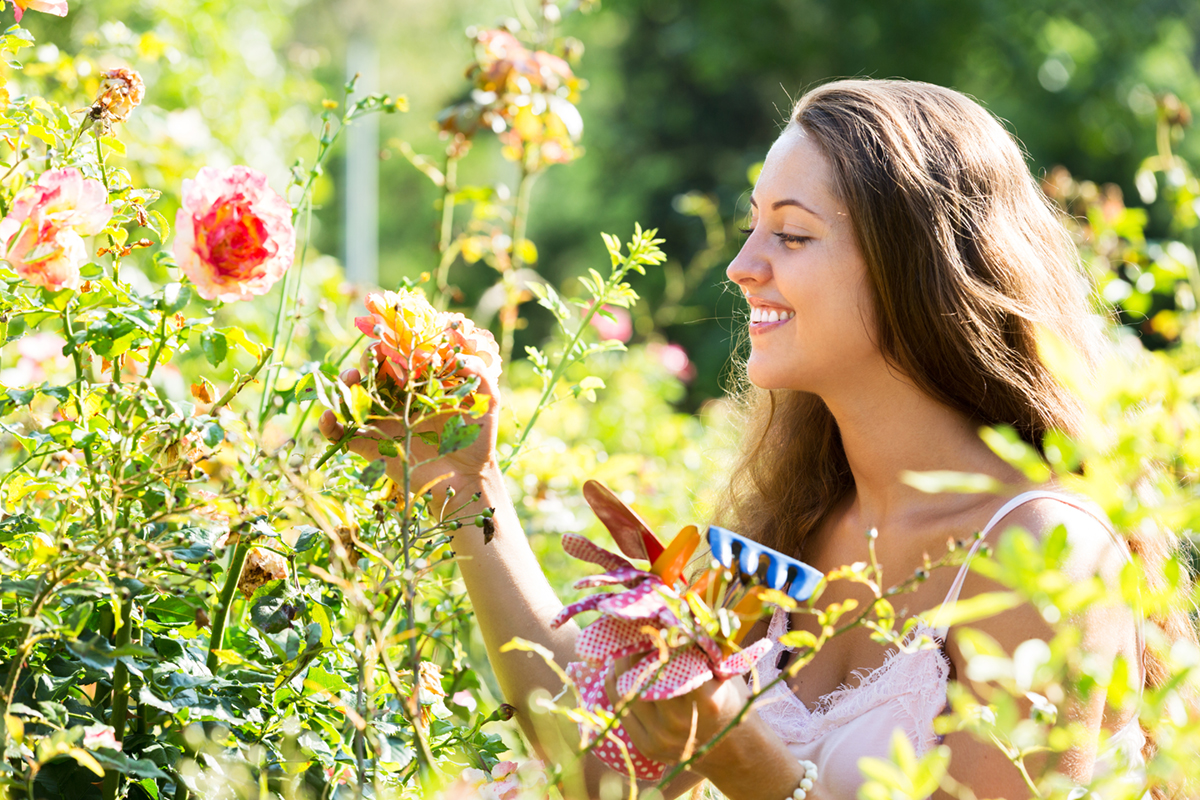Whether you’re dealing with a California drought, an mid-Atlantic heat wave or Deep South downpours, summer can be a tricky time to garden. Here’s what you need to know before you leave the comfort of the air conditioning for a steamy backyard jungle.
DON’T: Plant cool-season vegetables
Generally speaking, it’s a bad idea to attempt veggies like peas, lettuce, carrots and radishes in summer. They will quickly bolt in the heat, meaning that they’ll devote their energy to blooming and producing seeds, making the edible parts bitter.
DO: Plant hot-season vegetables
Take advantage of summer’s plentiful heat and sunshine by planting these heat-loving edibles: okra, sweet potatoes, chili peppers, cowpeas, yardlong beans and eggplant. Okra produces prolific pods all summer long, and is drought-tolerant as far as vegetables go. Sweet potatoes make an excellent temporary groundcover in veggie gardens and flowerbeds, shading out weeds until the arrival of cold weather, when they can be harvested.
DON’T: Water unless necessary
It’s tempting to set the sprinklers on a timer, kick up your feet and consider it taken care of. But here’s why that’s a problem: First off, do you really want to be the guy or gal who’s caught running sprinklers in a rain storm? Water plants when they are newly planted, or are wilting and/or dropping leaves due to drought.
DO: Use drought-tolerant plants
Drought-tolerant plants are all the rage, and not just because they conserve water. Grow drought-tolerant plants because they’re low-maintenance and because you’re an average person with – you know- a life. That said, ‘drought-tolerant’ does not mean that you can plant it and forget it. Keep the soil moist until the plant takes off on its own.
DON’T: Turn your back on the garden
Because in summer, things can change in a heartbeat. Plants can succumb to pests, drought, wet soil or rot in a matter of days. Pay attention to weather forecasts and be on the lookout for plants that are clearly struggling. Don’t hesitate to use those pruners on any bullies that seem to be taking over less vigorous plants. When in doubt, rip it out.

DO: Water deeply
Water like you really mean it – with a deep soak so that the water penetrates the soil without running off or evaporating in the summer heat. Watering deeply will also encourage deeper root growth, which helps plants (especially shrubs and trees) stay healthier and more drought-tolerant in the long run. Water in the root-zone with a high falutin’ garden nozzle, a soaker hose, or nothing more than a hose and a full stream of water.
DON’T: ‘Scalp’ your lawn
If you plan on turning your summer lawn into a practical putting green and you mow your lawn close, you’ll be sorely disappointed by the results. (Unless you’re willing to settle for a putting brown, that is.) Short cuts mean less drought-tolerance, patchier growth, more weeds and shallow roots. When in doubt, cut high.
DO: Fertilize warm-season grasses
Give your lawn a pick-me-up to cope with the summer heat. Your local garden center should have a good selection of fertilizers to suit your region and/or lawn type. Fertilize according to label instructions, using a broadcast, handheld or drop spreader for even coverage. Generally speaking, don’t feed on a hot day with temps above 90 degrees.
DON’T: Water in the afternoon
It’s a myth that sunlight will become magnified by water droplets and burn the plants, but watering in the hottest part of the day is still pretty useless because many plants will go semi-dormant, and water quickly evaporate in summer. Water in the early morning so that the plants’ roots have a chance to absorb moisture.
DON’T: Let weeds go to seed
Procrastinate all you want, but pull those weeds before they have a chance to bloom and go to seed, spreading their progeny all over your garden to proliferate and give you headaches. Don’t settle for hand-pulling everything either: use a hoe or cultivator for new weeds in loose soil, or a heavy-duty weeding tool like a hori-hori knife, hook or mattock for tough, established weeds.
DO: Plant tropical bulbs
Much of your garden will slow down in the heat of summer, but tropical bulbs such as caladiums, elephant ears, cannas and gingers will only grow faster. Create a lush and jungly understory beneath shady trees by planting en masse, or use sparely for architectural interest in container combos and flowerbeds.
Related:
